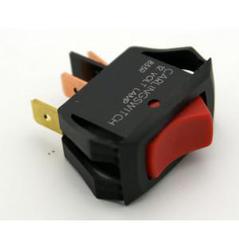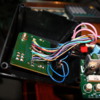Stan, Assuming those are the same LED holders they used. They would lock from the back. The first piece would be inserted in the front panel with the LED installed. Then the ring would be locked from the back.
This would verify my conclusion that most/or all of the devices were installed on the cover. Then the PCB board was aligned with the devices and soldered.
So, if the switch is unsoldered from the circuit board. There might be a chance to remove the switch via the top by destroying it...See posters lock picture on previous post.
If you get the switch out. A toggle switch that was depth appropriate might work.








